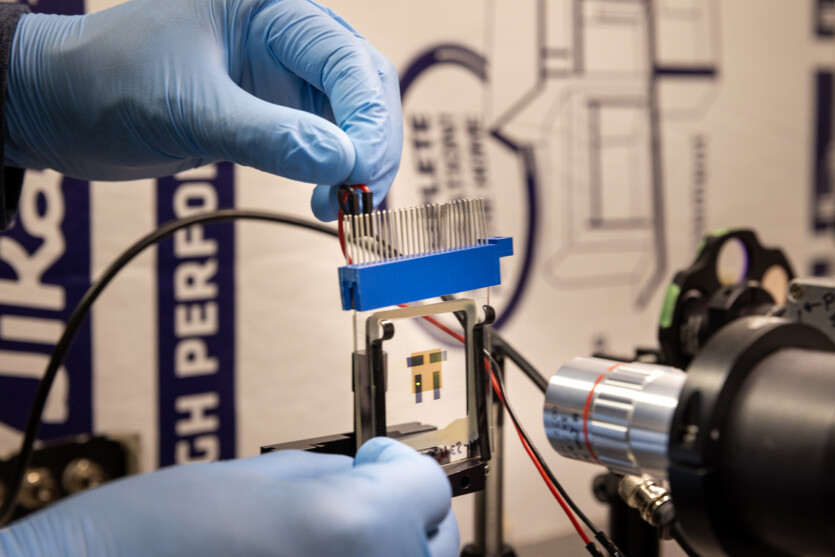
Researchers at the University of Michigan have invented a night vision device based on OLEDs that is thinner than paper. The technology does not require drastic changes in existing production
Chris Gibink, a professor of electrical engineering and computer science at the University of Michigan, may have made one of the biggest breakthroughs in night vision technology with a new type of organic light emitting diodes (OLEDs).
A five-layer OLED film less than 1/10th the thickness of a human hair converts infrared radiation into visible light and amplifies it by more than 100 times. All this is done using technologies that are already used to produce OLED panels.
The photon-absorbing layer, combined with a five-layer OLED stack, converts infrared light into electrons. The OLED stack produces five photons for every electron that passes through it. The electrons are then converted into photons of visible light. While some of the photons enter the user’s eye, others are absorbed again, creating a positive feedback loop that further amplifies the amount of light output. The team believes they can further optimize the design to improve the result.
There is also a «memory» effect, called hysteresis, created in OLEDs that the research team believes could lead to the use of computer vision systems. Machine learning and neural networks could potentially perceive and interpret images and light signals with an OLED night vision system. Depending on how long and bright the light source is, the duration and intensity of the memory effect changes
So the question arises as to how this «ghosting» effect will affect a possible future product.
«The device operates at a much lower voltage than traditional image intensifiers», — the research article says. Since it is only microns thick, one might assume that the device could be lightweight. Lead author Raju Lampande notes: «This is the first demonstration of significant photon amplification in a thin-film device».
Modern night vision devices collect ambient and infrared light, which passes through a photocathode and is converted into electrons. These electrons pass through a microchannel plate that multiplies the electrons before being directed to a phosphor screen. The phosphor screen is sensitive to the electrons and converts them into visible light.
For a good PNB, there is enough starlight to allow the user to see in near total darkness. The images are usually green because the eyes are more sensitive to green light and can distinguish details in it better. But there are also white PNVs, colored PNVs, and the ability to see thermal signatures.
Sources: New Atlas, EurikAlert, Nature Photonics



Spelling error report
The following text will be sent to our editors: